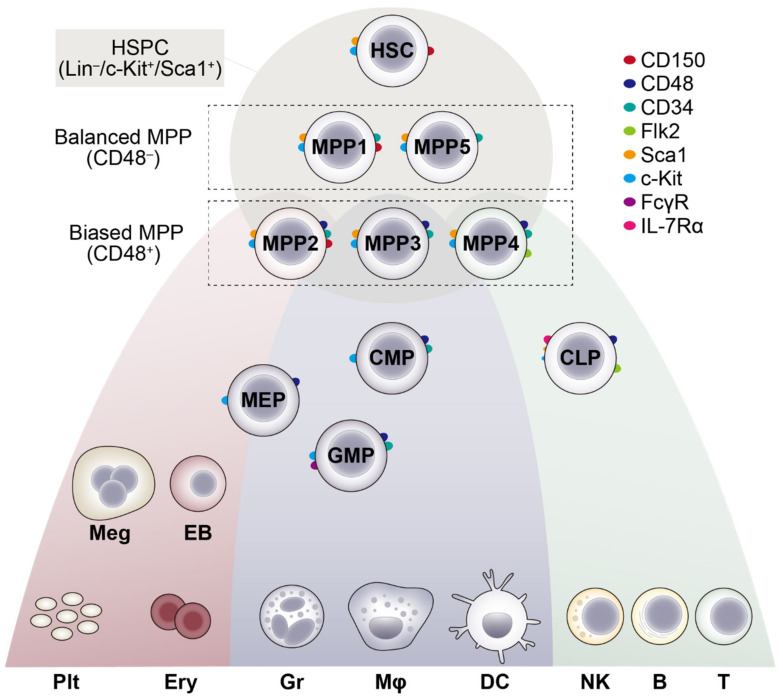Figure 1.
A revised model of adult HSC differentiation. In both humans and mice, recent scRNA-seq analyses predicted a revised model of adult HSC differentiation, where rather than the classical step-by-step progression through discrete cell states, HSCs undergo a continuous progression of lineage commitment toward individual mature blood cell types. In mice, HSCs first give rise to MPPs with no or little lineage commitment (MPP1, 5), and then lineage-biased MPPs, such as erythro-megakaryocyte-biased MPP2, myeloid-biased MPP3 and lymphoid-biased MPP4. These lineage-biased MPP subsets preferentially make further commitment to the corresponding lineage but can be instructed to commit towards others by external cues (e.g., inflammation). Surface markers that can be used to identify each murine HSPC and committed progenitor subset are also shown. It is noteworthy that in the revised model, a phenotypically defined progenitor subset (e.g., CMP) should represent a mixture of cells that are located within a certain range of the continuous differentiation path. CMP, common myeloid progenitors; GMP, granulocyte-monocyte progenitors; MEP, megakaryocyte-erythrocyte progenitors; CLP, common lymphoid progenitors; Meg, megakaryocytes; Plt, platelets; EB, erythroblasts; Ery, erythrocytes; Gr, granulocytes; Mφ, macrophages; DC, dendritic cells; NK, natural killer cells; B, B cells; T, T cells.

